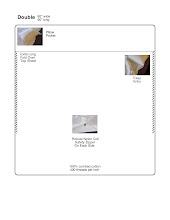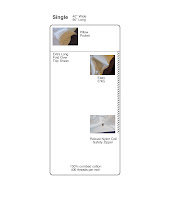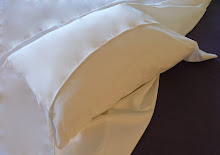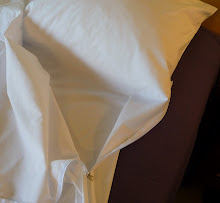According to a new study published in the Textile Research Journal 2009, tightly woven fabrics with a thread count above 246 and a pore size between 2 and 10 microns, blocked more than 99% of dust mite allergens and prevented penetration of 100% of dust mites.
The study, Anti-mite Covers: Potential Criteria for Materials Used Against Dust Mites, published by:Vanna Mahakittikun, Prapakorn Ninsanit,and Teerapong Wangapai - Department of Parasitology, Faculty of Medicine Siriraj Hospital, Mahidol University, Bangkok, Thailand and John Joseph Boitano - Stratford, Connecticut, USA and Chulaluk Komoltri - Clinical Epidemiology Unit, Faculty of Medicine Siriraj Hospital, Mahidol University, Bangkok, Thailand,
tested 53 mite proof covers claiming to be " anti-mite" from 10 different countries. The samples comprised tightly-woven ( over 265 thread count ), film/membrane coated woven, acaricidal-coated woven, non-woven, membrane-coated non woven, acaricidal ( ceramite,chitosan )-coated non-woven, plastic, and woven/non-woven combo fabrics. Three regular, cotton bed sheets ( 180 thread count ) were also tested and used as a comparison.
Keep in mind that these products tested were all claiming to be " anti-mite covers" specifically marketed to prevent dust mites and their associated allergens from infiltrating consumer bedding.
They concluded that while plastic and film/membrane fabrics performed well, because of the air permeability restrictions of these fabrics, tightly woven fabrics with an air permeability factor of between 2 and 6cm3/s/cm2 were the only fabrics to fulfill the requirements of performance and comfort.As well, tightly woven fabrics treated with acaricides fared no better than ones without acaricides. Fully 41% of the fabrics tested failed to meet the basic requirements, these included loosely woven fabrics treated with acaricides and non-woven fabrics.
The study also points out that it is not unreasonable to assume that repetitive launderings of all the various covers, other than plastic, would substantially degrade the performance over time, according to a study they cite. But, other studies cited, suggest the structural integrity of tightly woven covers was not compromised.
This study concluded that plastic and tightly woven covers block mite penetration and prevent leakage of allergens while other types of covers fail. The minimum criteria suggested is a fabric with " a pore size between 2 to 10 µm air permeability should be greater than 2 and less than 6cm3/s/cm2; and a thread count greater than 246/in2 "
What does this mean to the average consumer ? Basically they are saying that any tightly woven cover of more than 246 threads per inch is sufficient to block dust mites and their allergens. Coatings and chemicals have no benefit over a tightly woven fabric, and while plastic blocks mites and allergens, it is not air permeable, so it will be uncomfortable.
Finally the consumer has a baseline from which to make their decision on what kind of protection they choose and how much to pay for it. No longer will you have to pay for fancy coatings, chemicals, and false claims. What you do need, is a well constructed, high quality fabric with a thread count of more than 250. Whether you choose 100% cotton or a poly/cotton blend or just polyester, becomes a choice based on comfort and whether or not you have a sensitivity to synthetic materials. Choosing a mattress encasement, cover or travel sheet, no longer rests on the smallest pore size because any
material under 10 microns will block 99% of dust mite allergens and all mites. What you must remember is that on top of your mattress cover or encasement, you will also use a sheet. Combining the two, given that both are at least 250 thread count, your protection will be excellent.
Well ,why, you ask, do i need an encasement if my sheets are over 250 thread count ? For the same reason you should not use just a "cover". An encasement envelopes the whole mattress preventing any dust mites already there from escaping and preventing any new mites from infesting. If you use just a cover, something that you only put on top of your mattress, like a sheet, then you won't be getting the protection you could have or need.
The same criteria for encasements can be used for other protective barriers like travel sheets. The big difference between a mattress encasement and a travel sheet is, you don't sleep directly on a mattress cover, you do sleep directly on a travel sheet. So, while you may choose a mattress encasement or cover which is coarse,it will be covered by your sheets. Your choice for a travel sheet would be considerably softer. A product like an Allersac, at 400 threads per inch, provides more than enough protection but is soft and comfortable to sleep in.
Whichever product you need, do your homework. Find a well priced encasement or travel sheet to meet your needs. If a company can't tell you thread count or pore size, if the product can't easily be washed, or if you want pure cotton and they only have synthetic, move on. Contact another company, there are plenty of manufacturers of these types of protection.









No comments:
Post a Comment